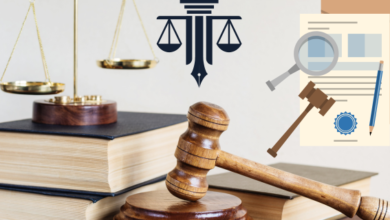The Las Cruces Case: A Summary
- The Incident: An officer responded to a call involving a reportedly armed individual. During the encounter, the officer discharged his firearm, resulting in the individual’s death. The details surrounding the perceived threat and the officer’s actions were heavily scrutinized.
- The Charges: The officer was subsequently charged with voluntary manslaughter, a serious felony offense. This decision signaled a willingness on the part of prosecutors to hold the officer criminally responsible for his actions.
- The Trial: The trial involved extensive testimony from expert witnesses, eyewitnesses, and the officer himself. The prosecution argued that the officer’s use of deadly force was unreasonable and unjustified, while the defense contended that the officer acted in self-defense.
- The Verdict: The jury ultimately found the officer guilty of voluntary manslaughter. This verdict sent shockwaves through the law enforcement community and sparked debate about the appropriate level of accountability for police officers.
- Public Reaction: The verdict elicited strong reactions from both supporters and critics of law enforcement. Some hailed it as a victory for justice and a step towards greater police accountability, while others expressed concern that it would discourage officers from taking necessary actions to protect themselves and the public.
Legal Precedents and the “Reasonable Officer” Standard
- Graham v. Connor (1989) 📌 This landmark Supreme Court case established the “reasonable officer” standard for evaluating police use of force. The Court held that the reasonableness of a particular use of force must be judged from the perspective of a reasonable officer on the scene, rather than with the 20/20 vision of hindsight.
- Tennessee v. Garner (1985) 📌 This Supreme Court case held that it is unconstitutional for a police officer to use deadly force to prevent the escape of a fleeing suspect unless the suspect poses a significant threat of death or serious physical injury to the officer or others.
- Qualified Immunity 📌 Qualified immunity protects government officials, including police officers, from liability in civil lawsuits unless their conduct violates clearly established statutory or constitutional rights, and there is case law demonstrating that right is clearly established. This doctrine often shields officers from accountability in use-of-force cases.
- State Laws and Regulations 📌 In addition to federal law, many states have their own laws and regulations governing police use of force. These laws may provide additional protections for individuals or impose stricter standards on law enforcement officers.
- Departmental Policies 📌 Many police departments have their own policies and procedures governing use of force. These policies may be stricter than state or federal law and can provide a basis for holding officers accountable for violating departmental guidelines.
- Training Standards 📌 Adequate training on de-escalation tactics, crisis intervention, and the proper use of force is essential for ensuring that officers act reasonably in use-of-force situations. Deficiencies in training can be a factor in determining liability in these cases.
Potential Impacts of the Las Cruces Verdict
- Increased Scrutiny of Police Actions The verdict may embolden prosecutors to more closely scrutinize police use-of-force incidents and to bring criminal charges against officers in cases where the use of force appears to be unjustified.
- Reduced Deference to Law Enforcement The verdict signals a potential shift away from the traditional deference given to law enforcement in use-of-force cases. Juries may be more willing to second-guess officers’ decisions and to hold them accountable for their actions.
- Increased Civil Lawsuits The verdict may lead to an increase in civil lawsuits against police officers and their departments in use-of-force cases. Plaintiffs may be more likely to prevail in these lawsuits if they can demonstrate that the officer’s use of force was unreasonable or unjustified.
- Policy Changes and Training Reforms The verdict may prompt police departments to review and revise their use-of-force policies and training procedures. This could lead to greater emphasis on de-escalation tactics, crisis intervention, and the proper use of force.
- Impact on Officer Morale The verdict may have a negative impact on officer morale and willingness to use force in dangerous situations. Officers may be more hesitant to use force, even when it is necessary to protect themselves or others, for fear of facing criminal charges or civil lawsuits.
- Legislative Action The verdict may spur legislative action at the state or federal level to reform police use-of-force laws and to increase accountability for law enforcement officers.
- Community Relations The verdict may improve relations between law enforcement and the community, particularly in communities that have historically experienced strained relationships with the police.
The Importance of De-escalation Training
Could the Las Cruces Manslaughter Verdict Redefine Accountability in Police Use of Deadly Force?
The Las Cruces Case: A Summary
- The Incident: An officer responded to a call involving a reportedly armed individual. During the encounter, the officer discharged his firearm, resulting in the individual’s death. The details surrounding the perceived threat and the officer’s actions were heavily scrutinized.
- The Charges: The officer was subsequently charged with voluntary manslaughter, a serious felony offense. This decision signaled a willingness on the part of prosecutors to hold the officer criminally responsible for his actions.
- The Trial: The trial involved extensive testimony from expert witnesses, eyewitnesses, and the officer himself. The prosecution argued that the officer’s use of deadly force was unreasonable and unjustified, while the defense contended that the officer acted in self-defense.
- The Verdict: The jury ultimately found the officer guilty of voluntary manslaughter. This verdict sent shockwaves through the law enforcement community and sparked debate about the appropriate level of accountability for police officers.
- Public Reaction: The verdict elicited strong reactions from both supporters and critics of law enforcement. Some hailed it as a victory for justice and a step towards greater police accountability, while others expressed concern that it would discourage officers from taking necessary actions to protect themselves and the public.
Legal Precedents and the “Reasonable Officer” Standard
- Graham v. Connor (1989) 📌 This landmark Supreme Court case established the “reasonable officer” standard for evaluating police use of force. The Court held that the reasonableness of a particular use of force must be judged from the perspective of a reasonable officer on the scene, rather than with the 20/20 vision of hindsight.
- Tennessee v. Garner (1985) 📌 This Supreme Court case held that it is unconstitutional for a police officer to use deadly force to prevent the escape of a fleeing suspect unless the suspect poses a significant threat of death or serious physical injury to the officer or others.
- Qualified Immunity 📌 Qualified immunity protects government officials, including police officers, from liability in civil lawsuits unless their conduct violates clearly established statutory or constitutional rights, and there is case law demonstrating that right is clearly established. This doctrine often shields officers from accountability in use-of-force cases.
- State Laws and Regulations 📌 In addition to federal law, many states have their own laws and regulations governing police use of force. These laws may provide additional protections for individuals or impose stricter standards on law enforcement officers.
- Departmental Policies 📌 Many police departments have their own policies and procedures governing use of force. These policies may be stricter than state or federal law and can provide a basis for holding officers accountable for violating departmental guidelines.
- Training Standards 📌 Adequate training on de-escalation tactics, crisis intervention, and the proper use of force is essential for ensuring that officers act reasonably in use-of-force situations. Deficiencies in training can be a factor in determining liability in these cases.
Potential Impacts of the Las Cruces Verdict
- Increased Scrutiny of Police Actions The verdict may embolden prosecutors to more closely scrutinize police use-of-force incidents and to bring criminal charges against officers in cases where the use of force appears to be unjustified.
- Reduced Deference to Law Enforcement The verdict signals a potential shift away from the traditional deference given to law enforcement in use-of-force cases. Juries may be more willing to second-guess officers’ decisions and to hold them accountable for their actions.
- Increased Civil Lawsuits The verdict may lead to an increase in civil lawsuits against police officers and their departments in use-of-force cases. Plaintiffs may be more likely to prevail in these lawsuits if they can demonstrate that the officer’s use of force was unreasonable or unjustified.
- Policy Changes and Training Reforms The verdict may prompt police departments to review and revise their use-of-force policies and training procedures. This could lead to greater emphasis on de-escalation tactics, crisis intervention, and the proper use of force.
- Impact on Officer Morale The verdict may have a negative impact on officer morale and willingness to use force in dangerous situations. Officers may be more hesitant to use force, even when it is necessary to protect themselves or others, for fear of facing criminal charges or civil lawsuits.
- Legislative Action The verdict may spur legislative action at the state or federal level to reform police use-of-force laws and to increase accountability for law enforcement officers.
- Community Relations The verdict may improve relations between law enforcement and the community, particularly in communities that have historically experienced strained relationships with the police.
The Importance of De-escalation Training
Communication Skills
Efficient communication is often needed in any environment. Strong communication skills can help in the legal field.
In volatile situations, effective communication can be the difference between a peaceful resolution and a deadly confrontation. Law enforcement officers must be adept at active listening, verbal persuasion, and non-verbal communication techniques. Clear and concise communication can help to de-escalate tensions, build rapport with individuals, and gain voluntary compliance. Training in crisis communication and conflict resolution is essential for equipping officers with the skills they need to handle challenging situations effectively.
Here are some aspects of communications you must consider in order to have effective dialogue:
- Active Listening: Pay close attention to what the other person is saying, both verbally and nonverbally. Show that you are listening by nodding, making eye contact, and summarizing what they have said.
- Empathy: Try to understand the other person’s perspective and feelings. Show that you care about their concerns and that you are willing to work with them to find a solution.
- Verbal De-escalation: Use calm and respectful language to de-escalate tensions. Avoid using inflammatory language or making threats.
- Non-Verbal Communication: Be aware of your body language and tone of voice. Maintain a calm and non-threatening posture. Speak in a clear and steady voice.
- Crisis Communication: Train officers in crisis communication techniques, such as how to handle individuals who are experiencing a mental health crisis or who are under the influence of drugs or alcohol.
Tactical Repositioning
One tactic used is Tactical Repositioning to minimize risk by repositioning.
Tactical repositioning involves moving to a safer location or changing your position to gain a better vantage point. This can help to reduce the risk of harm to yourself and others. It can also give you more time to assess the situation and make informed decisions.
Here are some guidelines to do this safely:
- Assess the Situation: Before repositioning, carefully assess the situation to determine if it is safe to move. Consider factors such as the location of other people, the presence of weapons, and the potential for ambush.
- Communicate Your Intentions: If possible, communicate your intentions to the other person before repositioning. This can help to avoid misunderstandings and prevent them from becoming agitated.
- Move to a Safer Location: Reposition to a location that is less exposed or that provides a better vantage point. This may involve moving behind cover, creating distance between yourself and the other person, or moving to a location where you can better observe the situation.
- Maintain Awareness: As you reposition, maintain awareness of your surroundings and be prepared to react to any potential threats.
Time and Distance
Using the strategy of putting time and distance between you and others can give you time to think.
Creating time and distance can help to de-escalate tensions and prevent a situation from escalating into violence. This can involve slowing down the pace of the encounter, creating physical distance between yourself and the other person, or requesting backup.
These are some factors to think about:
- Slow Down the Pace: Avoid rushing the encounter. Take your time to assess the situation, gather information, and communicate your intentions.
- Create Physical Distance: If possible, create physical distance between yourself and the other person. This can help to reduce the tension and give you more time to react if they become aggressive.
- Request Backup: If you are feeling overwhelmed or unsafe, request backup from other officers. Having additional officers on the scene can help to de-escalate the situation and ensure that you have the support you need.
Legal Options and Resources
If you or someone you know has been injured or killed in a police use-of-force incident, it is important to seek legal assistance from a qualified attorney.
An attorney can provide assistance in :
Legal advice is important
- Assessing your legal options.
- Investigating the incident.
- Negotiating with the police department or the city or county.
- Filing a lawsuit if necessary.
The Role of Community Policing
- Foot Patrols: Increase the number of officers walking or biking through neighborhoods. This allows officers to interact with residents on a more personal level and to build relationships.
- Community Meetings: Hold regular community meetings to discuss local problems and to solicit feedback from residents on police practices.
- Problem-Solving Partnerships: Work with community organizations, businesses, and residents to develop solutions to local problems. This may involve addressing issues such as crime, drug abuse, or homelessness.
- Youth Outreach Programs: Develop programs to engage with young people and to build positive relationships between them and law enforcement.
- Cultural Sensitivity Training: Provide officers with training on the cultural norms and values of the communities they serve. This can help to reduce misunderstandings and to build trust.
Examining the Impact on Police Recruitment and Retention
- Reduced Applications: Fewer people are applying to become police officers. This is due to a variety of factors, including concerns about safety, job satisfaction, and the current political climate.
- Increased Resignations: More officers are resigning or retiring early. This is due to factors such as stress, burnout, and concerns about being held accountable for their actions.
- Difficulty Attracting Qualified Candidates: Police departments are having difficulty attracting qualified candidates. This is due to a lack of interest in law enforcement careers and to the stigma associated with policing.
Efforts to Address the Recruitment and Retention Crisis
- Recruitment Incentives: Offering signing bonuses, tuition reimbursement, or other incentives to attract qualified candidates.
- Increased Pay and Benefits: Increasing pay and benefits to make law enforcement careers more attractive.
- Improved Training: Providing officers with better training on de-escalation tactics, crisis intervention, and cultural sensitivity.
- Mentorship Programs: Establishing mentorship programs to provide officers with support and guidance.
- Wellness Programs: Implementing wellness programs to help officers manage stress and burnout.
The Continued Evolution of Legal Standards
Legal Options and Resources
The legal system can improve by investing in better options.
These are the legal resources an attorney needs:
Legal resources are important.
- Legal Consultations
- Civil Rights Organizations
- Community Groups
The Role of Body-Worn Cameras
- Improved Transparency and Accountability BWCs can provide a clear and objective record of police interactions, which can help to resolve disputes about what happened and hold officers accountable for their actions.
- Reduced Use of Force Some studies have shown that BWCs can lead to a reduction in the use of force by police officers. This may be because officers are more aware of their behavior when they know they are being recorded.
- Increased Citizen Complaints BWCs can provide evidence to support or refute citizen complaints against police officers. This can help to ensure that complaints are investigated fairly and that officers are held accountable for misconduct.
- Improved Officer Safety BWCs can help to protect officers from false accusations of misconduct and can provide evidence to support their actions if they are involved in a use-of-force incident.
Challenges and Considerations
- Privacy Concerns The use of BWCs raises privacy concerns for both officers and the public. It is important to have clear policies in place to protect the privacy of individuals who are recorded by BWCs.
- Cost The cost of purchasing, maintaining, and storing BWC footage can be significant. Police departments must carefully consider the cost-effectiveness of BWCs before implementing them.
- Data Storage and Management The amount of data generated by BWCs can be enormous. Police departments must have adequate systems in place to store, manage, and retrieve BWC footage.
- Policy Development It is essential to have clear and comprehensive policies in place to govern the use of BWCs. These policies should address issues such as when officers are required to activate their cameras, how BWC footage will be stored and accessed, and how BWC footage will be used in investigations.
- Community Engagement It is important to engage with the community when developing and implementing BWC policies. This can help to ensure that the policies are fair and that the community has confidence in the use of BWCs.
The Impact of Implicit Bias
- Racial Bias Studies have shown that police officers are more likely to use force against individuals from minority groups. This may be due to implicit biases that lead officers to perceive individuals from these groups as more threatening or dangerous.
- Gender Bias Implicit gender biases can also affect police use-of-force decisions. For example, officers may be more likely to use force against male suspects than female suspects.
- Socioeconomic Bias Officers may be more likely to use force against individuals from low-income communities or those who are homeless. This may be due to implicit biases that lead officers to view these individuals as more likely to be involved in crime.
Addressing Implicit Bias
- Training Provide officers with training on implicit bias and how it can affect their behavior. This training should help officers to become more aware of their own biases and to develop strategies for mitigating their impact.
- Policy Review Review and revise use-of-force policies to ensure that they are fair and equitable. These policies should be designed to minimize the risk of bias and to promote de-escalation tactics.
- Data Collection and Analysis Collect data on police use-of-force incidents to identify patterns of bias. This data can be used to track progress in reducing bias and to identify areas where further training or policy changes are needed.
- Community Engagement Engage with the community to build trust and to solicit feedback on police practices. This can help to ensure that police practices are fair and that the community has confidence in law enforcement.
The Role of Independent Investigations
- Objectivity Independent investigations are more likely to be objective and impartial than internal investigations conducted by the police department. This can help to ensure that the investigation is fair and that the findings are credible.
- Transparency Independent investigations are more likely to be transparent to the public. This can help to build trust in the investigation process and to ensure that the public has confidence in the findings.
- Expertise Independent investigators often have specialized expertise in areas such as police practices, use of force, and civil rights law. This expertise can help to ensure that the investigation is thorough and that all relevant evidence is considered.
Challenges and Considerations
- Cost Independent investigations can be expensive. Police departments must be willing to allocate sufficient resources to ensure that these investigations are conducted properly.
- Political Resistance There may be political resistance to implementing independent investigations, particularly from police unions or other groups that are resistant to police reform.
- Access to Information Independent investigators must have access to all relevant information, including police records, witness statements, and forensic evidence. Police departments must be willing to cooperate fully with independent investigations.
The Path Forward: Towards Greater Accountability
- Promoting Transparency
- Investing in Training
- Reforming Qualified Immunity
- Engaging the Community
Legal Options and Resources
If you or someone you know has been injured or killed in a police use-of-force incident, it is important to seek legal assistance from a qualified attorney.
An attorney can provide assistance in :
Legal advice is important
- Assessing your legal options.
- Investigating the incident.
- Negotiating with the police department or the city or county.
- Filing a lawsuit if necessary.




